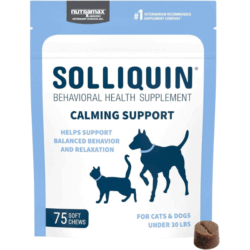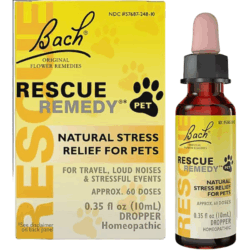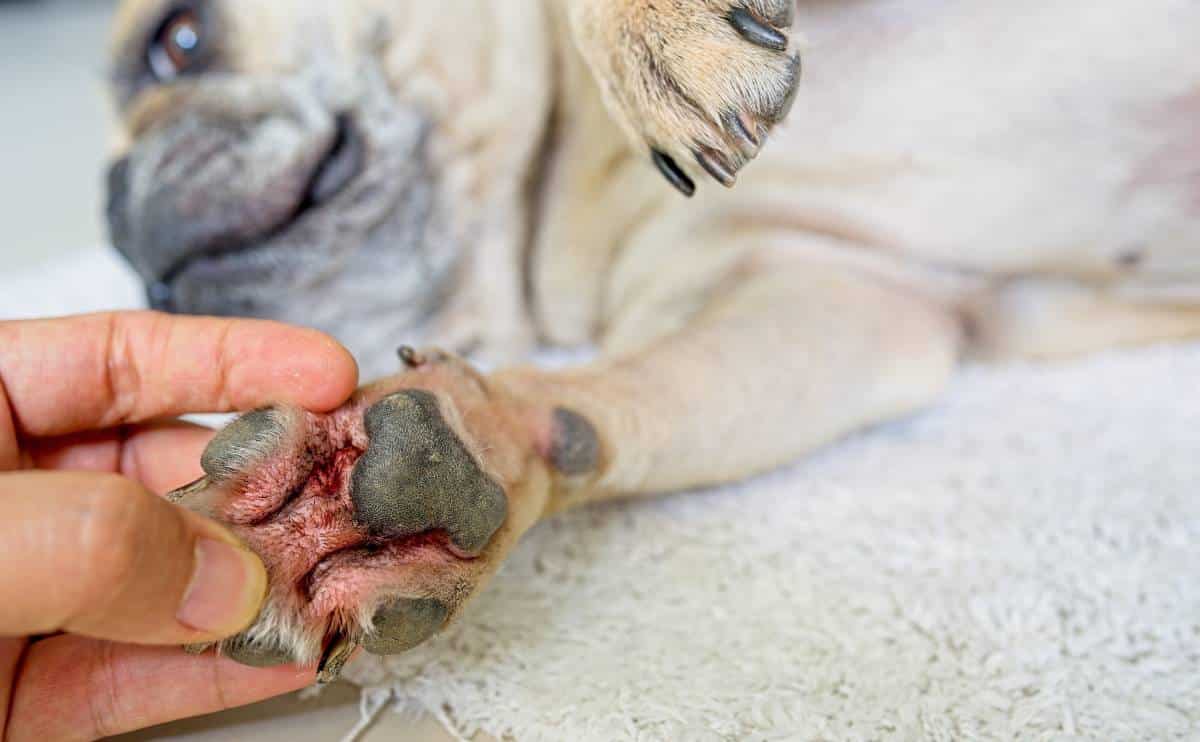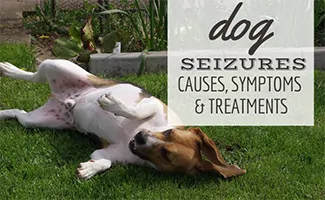The Sad Truth About Dog Depression (And How To Bring Back The Wag)
When you purchase through links on our site, we may earn a commission. Here’s how it works.
When your dog stops greeting you at the door or ignores their favorite treats, something deeper might be going on.
Table of Contents
Dogs can get the blues, especially after loss, stress, or significant changes at home. Understanding why it happens is the first step toward bringing joy — and tail wags — back into their life.
Can Dogs Actually Get Depressed?
The short answer: yes, but not in precisely the same way humans do.
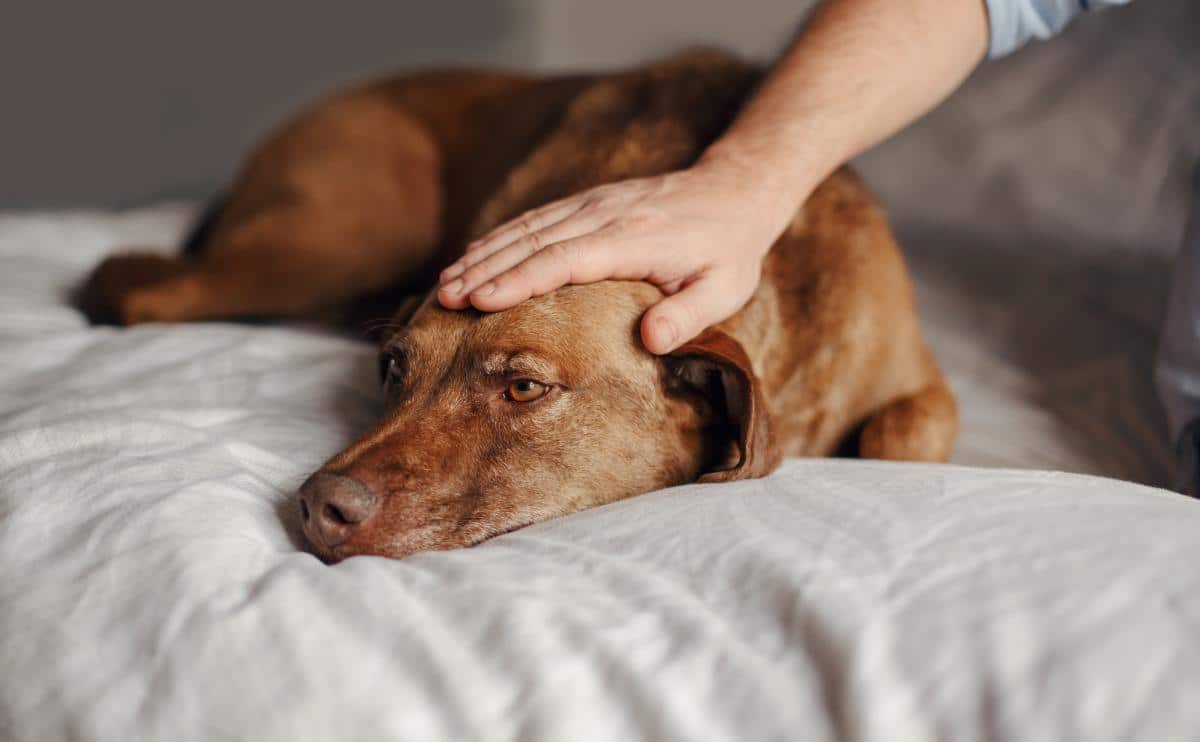
Dogs do not spiral into existential thought, but they can show emotional changes when something feels off. Their moods are deeply tied to routine, environment, and social connection, which means even small disruptions can have a significant impact.
Dog depression is typically situational or reactive, triggered by life changes like loss, relocation, or reduced attention. Once a dog’s routine is restored or emotional needs are met, they often rebound on their own. Still, chronic sadness can linger, especially in highly sensitive or bonded breeds.
It is also important to remember that stillness does not always mean sadness. A 2020 study found that dogs can remain awake and motionless without actually being in a state of depression. In other words, a quiet dog is not always a depressed one. Sometimes, they are simply resting or observing.
Signs Of Depression In Dogs
Spotting depression in dogs can be tricky because the symptoms often overlap with illness, pain, or aging.
Some pups simply move slower as they get older, while others withdraw because they do not feel well. That is why it is essential to rule out medical causes first before assuming your dog is sad.

Common signs of depression in dogs include:
- Sleeping more than usual or acting lethargic
- Skipping meals or showing less interest in treats
- Ignoring toys, walks, or playtime
- Hiding in quiet spots or avoiding family members
- Showing less enthusiasm when you come home
If your dog has started doing some of these things, do not panic. Occasional low moods are normal, especially after a significant life change. But when the spark fades for more than a couple of weeks, it may be a sign your dog needs extra support.
Sometimes, a dog’s sadness can deepen into a condition known as learned helplessness. This apathetic behavioral state develops when a dog experiences repeated stress or loss of control and begins to believe that nothing they do will make a difference.
A Cambridge University study found that shelter dogs housed for long periods often rested more, barked less, and spent more time at the back of their kennels. Over time, they appeared shut down, a behavior pattern associated with this type of emotional fatigue.

While that research focused on shelter settings, similar patterns can emerge in family dogs who are grieving, lonely, bored, or missing their usual structure. The key difference is that with gentle reassurance and new sources of engagement, most dogs rediscover their spark.
Quick Takeaway
- Depression in dogs can look like tiredness, disinterest, or withdrawal
- Short periods of low mood are normal, but persistent changes deserve attention
- Learned helplessness may develop when dogs feel hopeless or ignored
- Most dogs recover once their environment or routine improves
Common Triggers Behind Dog Depression
Just like people, dogs can feel down when life changes suddenly. Some pups adjust within days, while others take weeks to recover. Understanding what causes these emotional dips can help you identify patterns and prevent them from worsening.

Short-term depression often happens after a disruption in daily life. Examples include:
- A new baby, spouse, or pet in the home
- A change in schedule, such as returning to the office after working from home
- Kids leaving for school or college
- A move to a new home
- Temporary restrictions after surgery or injury
- Picking up on their owner’s stress or grief
Dogs are highly sensitive to routine and emotional cues. When the home feels different, they notice. They may act withdrawn, bark less, or refuse to eat, especially if they sense that their favorite person is distracted or upset.
Long-term depression is less common and usually tied to loss or prolonged loneliness. Dogs can grieve deeply when separated from a bonded companion or their human. This grief can linger for weeks or even months, especially if the dog has lost structure, exercise, or social interaction during that time.
Every dog’s reaction is unique. Some become clingy and seek comfort, while others withdraw completely. The important thing is to maintain connection and gently reintroduce positive activities, even if your dog does not show interest right away.
Quick Takeaway
- Short-term depression often follows a change or stress in the home
- Dogs reflect their owner’s mood and routine, so stability helps
- Long-term depression is usually linked to loss or extended loneliness
- Small steps toward normal activity can help a dog recover faster
Grief In Dogs: When Loss Runs Deep
Few things affect a dog more than losing someone they love. Whether it is a furry sibling or a human companion, dogs can grieve just as deeply as we do. Their routines change, familiar scents disappear, and the absence of a loved one can leave them confused and lonely.
Grieving dogs may search the house, cry or whine, lose interest in food, or sleep in places where their companion once rested. Others become clingy, following their owners from room to room as if afraid to be left alone. These behaviors are part of how dogs process loss and adapt to change.
Learn more about how dogs perceive loss in our guide, Do Dogs Understand Death?
Our Personal Experience With Canine Grief
When our dog Bear passed away, the whole house felt quieter, but no one took it harder than my other pup, Daisy. She had always been Bear’s shadow, following him from room to room, curling up beside him for naps, and even waiting until he finished eating before touching her own bowl. He had been there her whole life, and the world just seemed different without him.
After he was gone, Daisy seemed lost. She paced the house as if searching for him, and the spark in her eyes dimmed.
Meals went untouched, her favorite toys sat in the corner, and she spent hours curled in Bear’s old sleeping spot. It was heartbreaking to see her grieving in her own way.
I asked our vet if dogs can really get depressed, and she confirmed what I already suspected: they absolutely can. The advice was to keep Daisy’s routine steady, give her extra comfort, and watch for any signs that she might need more help.
To help her through, we leaned into routine: daily walks, extra playtime, and plenty of gentle affection. I even noticed she perked up when I talked to her more often, as if the sound of my voice filled in some of the silence Bear left behind.
Over time, Daisy began to wag her tail again, eat with more enthusiasm, and find comfort in new patterns, but it was a slow, tender process.
— Danielle DeGroot, Rescue Dog Mom & Canine Journal Writer
Can Dogs Die From Sadness?
Emotional distress can have profound effects on their physical health. When dogs experience prolonged stress or grief, their immune systems weaken, and preexisting conditions can worsen. Over time, that stress can lead to a decline in energy, appetite, and overall well-being.

Veterinarians often compare this to how chronic stress affects people. In humans, intense grief can trigger a temporary heart condition called “broken heart syndrome,” where the heart muscle weakens due to emotional shock. While no direct canine equivalent has been identified, many experts agree that long-term sadness can take a measurable toll on a dog’s body.
A grieving or depressed dog may eat less, sleep poorly, or become withdrawn. These changes can lead to dehydration, malnutrition, or even organ strain if they persist. That is why early intervention — through veterinary support, enrichment, and companionship — is so important.
Quick Takeaway
- Dogs cannot literally die from sadness, but grief can weaken their health
- Prolonged stress suppresses the immune system and worsens existing issues
- Veterinary care and emotional support help prevent long-term decline
7 Ways To Help A Depressed Dog: The Mood-Boosting Protocol
When your dog seems down, it can feel helpless to watch. The best approach is to focus on small, consistent actions that rebuild their confidence and routine. Think of this as a daily reset designed to lift both mood and motivation.
1. Get Moving Every Day
Exercise is one of the most effective ways to improve mood in both humans and dogs. Fresh air, new scents, and physical movement release endorphins, which in turn reduce anxiety. Even a short walk or car ride can make a noticeable difference.

2. Reintroduce Play & Enrichment
Depressed dogs may not show interest at first, so start small. Rotate toys, try gentle tug games, or use brain games that reward curiosity. Snuffle mats, food-dispensing balls, or scent-based games can help your dog reengage with their environment.
3. Offer Structure & Familiarity
Dogs thrive on predictability. Keep feeding, walking, and bedtime routines consistent. This structure provides stability, which can help your dog feel safe and regain control.
4. Encourage Positive Social Time
If your dog enjoys company, schedule short visits with trusted friends or familiar dogs. Social interaction helps them rebuild confidence and trust. If your pup prefers quiet, simply spending calm time together can help them reconnect emotionally.

5. Support Relaxation & Rest
Create a calm environment with soft lighting and soothing background noise. Studies show that classical, reggae, and soft rock can help dogs relax, lowering stress behaviors like barking and pacing while encouraging rest.
A comfortable bed in a quiet spot can also make a big difference, especially for dogs adjusting to loss or change.
6. Add Natural Mood Support
Supplements and herbs can provide additional support during recovery. Calming options include CBD oil, Bach’s Rescue Remedy, and uplifting herbs like lemon balm, passionflower, catnip, ashwagandha, and holy basil. Always confirm safety and dosage with your veterinarian first.
7. Restore From The Inside Out
What your dog eats can affect how they feel. A diet with healthy fats, complex carbohydrates, and gut-friendly ingredients supports both physical and emotional health.
Feeding a high-quality diet or adding a probiotic supplement can help your dog’s body and mind recover together. A healthy gut helps create a happier brain.

Quick Takeaway: Consistency is the foundation of recovery. When exercise, play, relaxation, and nutrition work together, most dogs begin to show positive changes within a few weeks. Focus on progress rather than perfection, and remember that even small steps — such as taking a short walk or introducing a new toy — can make a significant emotional difference.
Diet & Nutrition: Feeding A Happier Brain
Food influences more than your dog’s physical health; it affects their mood, energy, and emotional balance. What happens in the gut often reflects in the brain, which is why nutrition plays such a key role in helping dogs recover from stress or depression.

Omega-3 Fatty Acids & Brain Health
Omega-3 fatty acids help regulate neurotransmitters that control mood and stress response. They are found in ingredients such as:
- Fish oil
- Flaxseed
- Algae
- Chia seeds
These healthy fats reduce inflammation and support brain function. Many veterinarians recommend omega-3 supplements for dogs showing signs of anxiety, aging, or chronic inflammation.
Complex Carbohydrates & Serotonin Support
Complex carbohydrates provide steady energy and support serotonin production, which helps regulate mood and emotional well-being. They also prevent energy crashes and mood swings associated with blood sugar fluctuations.
Good options include:
- Oats
- Quinoa
- Sweet potatoes
- Brown rice
Gut Health & Emotional Balance
The gut and brain are closely connected through what scientists refer to as the gut–brain axis. A healthy gut microbiome supports the production of neurotransmitters that influence mood, stress, and sleep.
Ways to support gut health:
- Feed prebiotic fiber sources such as pumpkin, chicory root, or whole grains
- Add probiotic supplements to introduce beneficial bacteria directly
- Choose foods that combine both prebiotics & probiotics for maximum balance
A 2020 study found that the gut microbiota of German Shepherds closely resembles that of humans suffering from depression. The study highlights how similar bacterial imbalances may influence mood across both species, underscoring the importance of supporting gut health through diet.
Hydration & Inflammation
Dehydration can worsen fatigue and stress. Keep your dog hydrated by:
- Providing constant access to fresh water
- Offering moisture-rich foods such as wet food or bone broth
3 Natural Supplements For Mood Support
When a dog is feeling low, the goal is not just to calm them but to lift their overall mood and help them feel more like themselves. The right natural supplements can gently support brain chemistry, emotional balance, and resilience to stress while also helping dogs reengage with daily life.
1. Fera Pets Calming Support Powder Review
This supplement supports a brighter, more stable mood by nourishing both the nervous system and the gut. It combines amino acids, vitamins, herbs, and probiotics that support the brain–gut connection, which plays a key role in mood regulation.
Active Ingredients:
- γ-Aminobutyric acid (GABA) 100 mg
- L-Tyrosine 50 mg
- L-Tryptophan 50 mg
- L-Theanine 50 mg
- Thiamine 50 mg
- Organic Passion Flower 25 mg
- Organic Valerian Root 25 mg
- Organic Ginger 25 mg
- KSM-66® Ashwagandha 25 mg
- Magnesium 15 mg
- Lactobacillus paracasei LPC-37 3 billion CFUs
It features clinically researched KSM-66® ashwagandha for emotional resilience and Lactobacillus paracasei LPC-37, a probiotic known to support stress response and wellbeing. It is third-party tested and NASC certified for quality assurance.
2. Nutramax Solliquin Soft Chews Review
Solliquin helps promote relaxation and emotional balance without sedation. It works by supporting neurotransmitters associated with calm alertness and healthy mood.
Active Ingredients:
- Magnolia officinalis & Phellodendron amurense extracts 225 mg
- L-Theanine 102 mg
- Dried Whey Protein Concentrate (NMXSLQ05®) 50 mg
Studies on Magnolia/Phellodendron (MP) extracts have shown that the combination can help regulate cortisol, the body’s stress hormone, and promote a more positive emotional state in both humans and animals.
Solliquin is a good choice for dogs who seem disengaged or subdued after emotional stress.
3. Bach Rescue Remedy
This flower essence blend is formulated to restore comfort and optimism after emotional distress. It is often used when dogs have gone through a loss, major life change, or other experiences that seem to dim their enthusiasm.
Made from five flower essences:
- Star of Bethlehem
- Rock Rose
- Cherry Plum
- Impatiens
- Clematis
Star of Bethlehem, in particular, is used to support healing from grief or sadness. Rescue Remedy can be given directly or added to water for gentle, daily mood support.
Prescription Medications For Chronic Depression Or Anxiety
For some dogs, supplements and environmental changes are not enough to restore a healthy mood. When sadness or withdrawal persists, veterinarians may prescribe medication to help rebalance brain chemistry and improve overall emotional well-being.
These medications are designed to lift mood, support motivation, and make it easier for dogs to respond to positive experiences.
Common veterinary-prescribed options include:
- Fluoxetine (Prozac): An SSRI that helps regulate serotonin levels in the brain. It is often used to improve mood stability, increase engagement, and reduce long-term emotional withdrawal.
- Trazodone: Commonly prescribed to help dogs rest and adjust during stressful situations. It can also help promote relaxation, supporting a better emotional reset.
- Clomipramine (Clomicalm): A tricyclic antidepressant used to manage chronic stress, compulsive behaviors, and separation-related sadness.
These medications are not quick fixes, but they can play a valuable role in a broader recovery plan. Most dogs require several weeks to show improvement, and success is highest when medication is combined with exercise, enrichment, and consistent social interaction.
Quick Takeaway: Prescription medications can help restore emotional balance in dogs experiencing long-term sadness or a loss of interest in life. Combined with structure, affection, and gentle stimulation, they create a foundation for genuine recovery rather than temporary calm.
When To See A Vet Or Behaviorist
If your dog’s low mood has lasted more than two weeks, or if their behavior has changed drastically, it is time to involve a professional. While mild sadness often improves with attention and routine, ongoing depression can signal an underlying medical issue that needs treatment.

Start with a veterinary checkup. Many health problems, such as thyroid disorders, chronic pain, or digestive issues, can cause lethargy, appetite loss, or irritability. Your veterinarian can rule out physical causes and determine whether mood-supportive medication or supplements might be beneficial.
If your vet rules out medical issues but your dog still seems emotionally stuck, a certified animal behaviorist can help. Behaviorists specialize in identifying environmental or relational triggers and designing customized plans to rebuild your dog’s confidence and motivation.
Signs that it is time to seek professional help include:
- Persistent sadness or low energy for more than two weeks
- Refusal to eat or drink
- Loss of interest in all forms of play or interaction
- Self-destructive behaviors such as excessive licking or chewing
- Sudden aggression or extreme withdrawal
Early intervention can facilitate a faster and more comprehensive recovery. Veterinary support, behavior modification, and structured enrichment often work best when combined, helping dogs regain joy and emotional balance.
Frequently Asked Questions
Even with the best care, it can be hard to know exactly what your dog is feeling. These are some of the most common questions pet parents ask when their pup seems sad, withdrawn, or less playful than usual.
Don’t see your question? Ask us in the comments.
Can Dogs Get Seasonal Depression?
Yes, dogs can experience seasonal mood changes, similar to those in humans. Shorter daylight hours, reduced outdoor activity, and changes in routine can all lower a dog’s energy level.
If your dog seems sluggish or less engaged during winter, try increasing natural light exposure, indoor play, and walks when the weather allows.
Most dogs perk up once their environment becomes more stimulating again.
How Long Does Dog Depression Last?
Mild cases often resolve within a few weeks once structure and attention are restored. However, more profound grief or long-term depression can take several months to improve. Dogs who have lost a bonded companion or experienced trauma may recover more slowly.
If your dog shows little to no improvement after two to three weeks of supportive care, schedule a veterinary visit to rule out medical causes and discuss additional treatment options.
Can Food Really Improve My Dog’s Mood?
Absolutely. Nutrition has a direct impact on the gut microbiome, which in turn influences mood-regulating neurotransmitters such as serotonin.
If your dog’s appetite is low, try offering smaller, high-value meals or incorporating wet food to make eating more appealing during recovery.
Will Getting Another Pet Help My Depressed Dog?
It depends on your dog’s personality and the cause of their sadness. Some dogs find comfort and renewed energy in a new companion, while others may feel overwhelmed or withdrawn. Introducing another pet too soon can sometimes add stress rather than relief.
If your dog is grieving a loss, give them time to heal and rebuild confidence before bringing another animal into the home. Once they are eating, playing, and engaging again, a companion may be a positive addition.
Can Dogs Take Antidepressants Like People Do?
Yes, but only under veterinary supervision. Medications such as fluoxetine (Prozac) and clomipramine (Clomicalm) are approved for canine use and can help restore emotional balance in cases of chronic depression or anxiety.
These medications work by regulating serotonin and other neurotransmitters in the brain. Your veterinarian will determine the correct dosage and monitor your dog’s progress to ensure safe and effective results.
Can I Prevent Dog Depression?
You can reduce the risk by keeping your dog’s routine predictable and their environment enriching. Provide daily exercise, mental stimulation, and opportunities for social interaction. Regular veterinary checkups also help catch health issues before they affect mood.
Most importantly, maintain consistent affection and engagement. Dogs thrive on connection, and emotional well-being often improves when they feel seen and included in family life.
Dealing With Dog Anxiety
Grief and prolonged stress can take their toll on a dog’s health, so it’s worthwhile for pet parents to know how to recognize signs of dog depression and anxiety and seek veterinary help early on. Learn more about how to deal with separation anxiety in dogs and how to help dogs with anxiety, including clomipramine as a possible solution.


